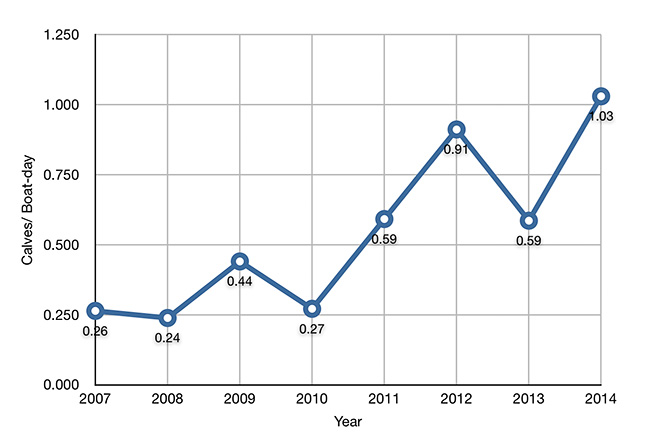Hear some recordings of the Orcas Pass Calls At this site.
Orcas pass calls from one generation to another and maintain them culturally.
Listen here to Orcas Pass Calls
Like the oral storytelling traditions of humans, orcas pass calls from one generation to another and maintain them culturally, Olsen said. Groups tend to have between 10 and 15 calls.
Cultural drift is a culture???s tendency to change in different ways over time, from generation to generation.
???Cultural drift (in orcas) happens when matrons die ??? great-great grandmothers ??? because they???re no longer modeling the calls,??? Olsen said. ???Cousins sound alike, but not exactly the same.???
By dropping hydrophones in the water, Olsen and other researchers ??? among them longtime researcher Craig Matkin, whom Olsen calls ???the main killer whale researcher in Alaska,?????? are able to hear whales all around their boat. The tough part comes in figuring out which one is calling.
???It???s really tricky to try and get individuality out of them (the hydrophones) because they???re omnidirectional,??? Olsen said.
The hydrophones are powerful, though ??? he???s heard whales from 13 to 15 miles away. Whales can hear each other from longer distances, likely 20 miles, he said.
Low-pitched sound travels farther, whereas high-pitched sound travels faster.
But killer whales don???t have to choose between speed and staying power. They can make two different frequencies at the same time, as they have two nasal passages leading up to the same blowhole, he said. About half of calls use both capacities, and are biphonic, he said.
The high-pitched sound goes straight out in front of them, and the low pitched sound goes ???all the way around.??? This helps whales figure out how far away another whale is, which way it???s facing, and more.
???They have an incredible, incredible acoustic awareness,??? he said. ???We as humans can???t tell direction underwater, but they???re very capable.???
Typically, calls don???t seem to be associated with specific behaviors.
Family calls, he said, are ???more about identity than what they???re trying to say.???
Be sure to Listen to the recordings “Orcas Pass Calls“
Find out more about killer whales at the North Gulf Oceanic Society???s website, https://www.whalesalaska.org.














